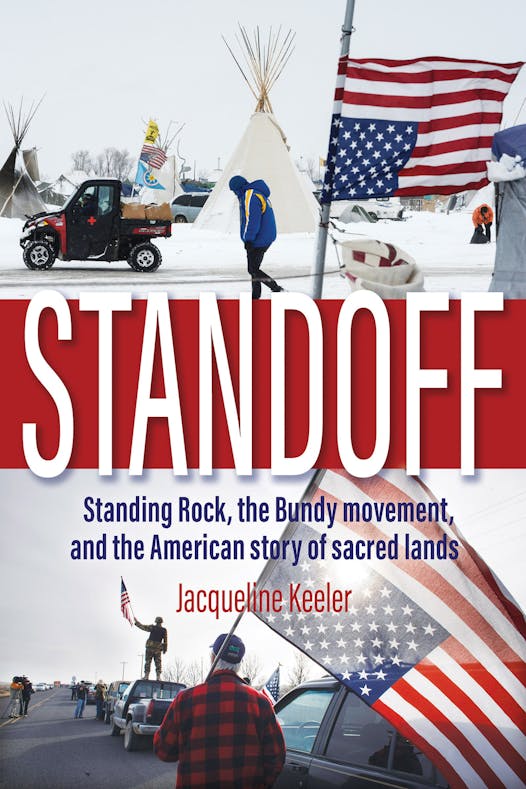The optics in 2016 were startling. In that year, armed white men dressed in cowboy hats and range coats took over Oregon's Malheur National Wildlife Refuge with little opposition, while 1,200 miles east, unarmed members of the Great Sioux Nation protesting an oil pipeline at Standing Rock in North Dakota were bombarded with water cannons and arrested en masse.
And while cable and network news extensively covered the events at Malheur, the efforts to protect the groundwater at Standing Rock received sporadic national coverage.
In "Standoff," Jacqueline Keeler, a member of both the Diné and Ihanktonwan Dakota nations, writes that the two incidents offered a contrast, not only in the ways that race continues to play a role in protest and official response to said protests, but also in demonstrating how culture and history have shaped white and Indigenous relationships with American land.
Keeler sees "stories" as a primary way of establishing one's attitude toward land and its purpose. She argues that the 1493 "Doctrine of Discovery," established in a papal bull, declared "undiscovered" lands could be claimed by their European "discoverers." That claim could be buttressed by the justification that the aboriginal peoples who lived there did not use land in optimal ways. Thus European desires to extract value from the land via mining, agriculture or the taking of timber were better uses for land rather than just allowing it to remain in its natural state.
She argues that the Bundy family's claim that grazing their cattle on Bureau of Land Management land was a better use for the land than having it sit "empty" is part of this inherited, historic approach.
The Bundys' claims to the land and the events leading up to the armed storming of a federal building were further complicated by their specious legal reasoning that jurisdiction over land rests with local governments rather than the federal government — even as the Bundy cohort claimed individual rights enunciated in the U.S. Constitution.
For the members of the nine tribes of the Great Sioux Nation, their relationship to the land is based in stories from an oral tradition with which most Americans are not conversant. While classroom civics classes acquaint Americans with the philosophy and events that informed the writing of the Constitution, they do not teach the stories that tie the Sioux to their Dakota and Lakota lands.
Keeler draws on her heritage to illustrate the ways in which oral traditions establish these connections and infuse beliefs of belonging to the land. She also argues that American perceptions that treaties were terms of "surrender" rather than negotiations between sovereign nations cause many Americans to see the Indians as the party that always needs to concede in any conflict.
Keeler makes a compelling case that the government's responses to the two incidents go beyond the simple optics of white cowboys being treated differently from Indians. The racial aspect is undeniable, but Keeler's elucidation of how the domination of the written word over oral storytelling contributes to the unequal application of justice adds fascinating context.
I was disappointed that Keeler did not provide a bibliography or notes, but I also found it illustrative of the difficulties of documenting the oral transmission of culture.
Lorraine Berry is a book critic in Oregon.
Standoff
By: Jacqueline Keeler.
Publisher: Torrey House Press, 236 pages, $19.95


